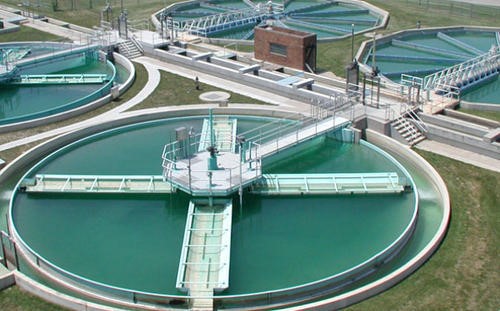Importance and Role of Sewage Treatment Plant (STP)
According to recent reports, nearly 1.2 billion people lack access to clean drinking water. Water scarcity is driven by many factors though most importantly three factors – which is the increasing use of freshwater , depletion of usable freshwater resources and poor management of sufficiently available water.
Following are some of the major causes of water shortage:
- Climate change
- Natural calamities such as droughts and floods
- Increased human consumption
- Overuse and wastage of water
- A global rise in freshwater demand
- Overuse of aquifers and its consequent slow recharge
With the increase in shortage of drinking water it has become very important for mankind to have proper waste water management plans. In last 50 years human has done the maximum amount of harm or exploited earth for it own benefits. This is the time for us to stop and do something good and appreciable for earth. This is where the role of Kelvin water technologies comes into picture and trying their best to preserve earth for future generation’s well being. Kelvin India is not only working for water management and also for managing the organic wastes which can be recycled and used for betterment of nature.

Following are the segments where KELVIN WATER TECHNOLOGIES is delivering their services and working constantly on new innovations.
1. Waste Water Treatment Plant: Waste water treatment include all kinds of waste water from household waste water to industrial waste water. In these treatment plants many methods or processes are used in a step by step procedure to ultimately get the reusable water form which are safe for the environment. are used to
By discharging the water through the cleaning process,recycled water may be used for agriculture production. Apart from that, for cleaning the waste water, it must undergo through many process such as, Preliminary treatment, Primary treatment, Secondary treatment and Territory treatment which are all step-by-step processes.
Basically three methods are used in Kelvin for waste water treatment:
1.Physical Method: As the waste water contains oil, grease, stone,bricks,soil etc. These are separated in this method through their physical property use. As oil and grease density is low, it moves above the water and settle on surface while kept in a tank for few hours. Through physical efforts grease and oil are separated from above and also the stones bricks or solid portion settles on base of the tank which can also be separated easily from the middle section of waste water.
2.Chemical Method: After physical separation of waste from water next step is to separate the harmful dissolved solvents from water which can be harmful for human and environment.Cleaning chemicals like chlorine or coagulation are used to remove harmful elements in water.
3. Bio-logical method: Waste water contains organic and inorganic elements for which different process is used. Waste water consisting of organic elements can be removed through filtration or chemicals reaction. This may lead to clean the dissolved solvents from the water. Whereas to clean the inorganic elements many processes are used step by step because harmful contaminants leave odor and make the water highly polluted
Sewage Treatment Plant / STP:
Sewage treatment is the process of removing contaminants from municipal wastewater, containing mainly household sewage plus some industrial wastewater. Physical, chemical, and biological processes are used to remove contaminants and produce treated wastewater (or treated effluent) that is safe enough for release into the environment.
Technologies used in Sewage treatment plant/system:
- MBBR (MOVING BED BIOFILM REACTOR):
The sludge is collected on the plastic carriers which have a large internal surface area. The surface area in the carriers optimizes the contact of water, air, and bacteria.
MBBR activated sludge is the application of MBBR media to an overloaded treatment plant when upgrading.
MBBR is applicable to the different quality of wastewater treatment. The application is determined by the desired results and regulations controlling discharge. The system can be of more than one stage depending on specific needs. The stages are made of individual tanks separated by screens to ensure that bacteria remain in their specific tank.
- MBR (MEMBRANE BIO-REACTOR):
Membrane bioreactor (MBR) is the combination of a membrane process like micro- filtration or ultra -filtration with a biological wastewater treatment process, the activated sludge process. It is now widely used for municipal and industrial wastewater treatment.
- SBR (SEQUENCING BATCH REACTOR):
SBR reactors treat wastewater such as sewage or output from anaerobic digester or mechanical biological treatment facilities in batches. Oxygen is bubbled through the mixture of wastewater and activated sludge to reduce the organic matter (measured as biochemical oxygen demand (BOD) and chemical oxygen demand (COD)). The treated effluent may be suitable for discharge to surface waters or possibly for use on land.
- SAF( SUBMURGED AERATED FILTER) :
The SAF is an up-flow bioreactor which employs a high efficiency neutral buoyancy plastic media. The SAF consists of a containment vessel having internal dividing walls, internal air and water distribution systems, charge of plastic media and internal support structure. The media provides a large surface area on which the bacteria attach themselves to grow and live.
Air is introduced into the SAF through a separate diffuser system in the base of the unit. An air blower supplies oxygen to the SAF environment on a continuous basis. . This produces a homogeneous solution in full contact with the entire microbial population for the period of time that the wastewater is in the reactor.